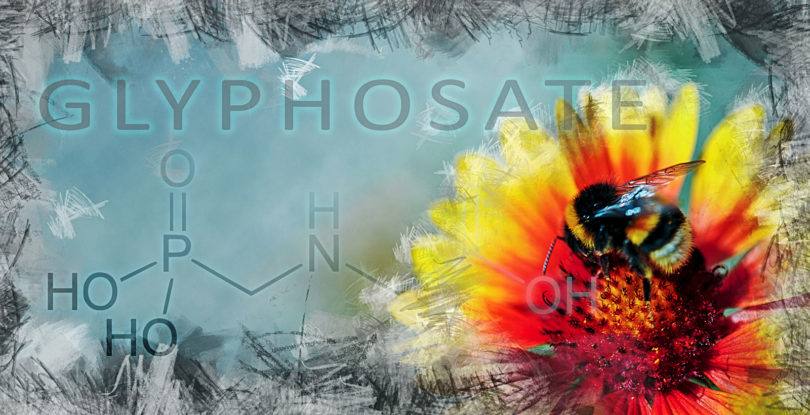The herbicide glyphosate — better known as Roundup, the trade name under which it’s marketed by agricultural company Monsanto — is currently the single most-used herbicide in the agriculture industry and the second-most used in the home and garden sector.
It’s also highly controversial, with food safety advocates decrying it as a carcinogen and lethal toxin, and Monsanto (whose acquisition by the Bayer corporation was expected to be completed in August) maintaining that it is entirely non-toxic.
Earlier this year, an appeals court sided with the state of California and the Center for Food Safety to list glyphosate on Roundup labels as a known carcinogen, but the decision was later blocked. Meanwhile, the Environmental Protection Agency continues to label glyphosate as “likely non-carcinogenic.” So how safe is it really? It’s a complicated question, both because glyphosate is used for several different purposes and because the scientific data is thoroughly mixed.
The Three Uses of Roundup
Before we dive into the data on glyphosate, one thing needs to be clarified: it’s used a few different ways, some of which present a greater exposure risk than others.
First, glyphosate is used as an herbicide on agricultural crops, including on many that are genetically engineered to tolerate it. Used in this capacity, it will have mostly dissipated or washed off by the time crops are harvested. As such, the main concerns here are that runoff will contaminate local groundwater, and that agricultural workers will be exposed to it.
Second, it’s sprayed on crops as a drying agent immediately before harvesting, which allows farmers to harvest crops earlier. It is this usage that causes significant amounts of glyphosate to enter our food supply.
Third, glyphosate is used in gardening, both in private homes and in public areas such as parks and sidewalks. This presents a possibility of exposure to both gardeners and passersby.
What the Research Says
Studies on glyphosate have been decidedly mixed.
In March 2015, the World Health Organization (WHO)classified glyphosate as “probably carcinogenic in humans.” However, in 2016, a joint panel of WHO and the Food and Agricultural Organization of the United Nations, or FAO, concluded that glyphosate was “unlikely to pose a carcinogenic risk to humans” from dietary exposure — meaning, the panel said they didn’t think people would get sick from consuming the chemical.
However, acute exposure to glyphosate is known to cause irritation to the skin and eyes, according to the journal Toxicological Reviews. Accidental ingestion of small doses generally causes only minor intestinal discomfort, while deliberate ingestion of larger doses (85 to 200 ml of Roundup) has been fatal in some cases.
Different analyses have looked at the same evidence and reached opposing conclusions.
A 2012 meta-analysis of studies on glyphosate found no evidence of a link to cancer, while a 2014 meta-analysis of the same studies did find a link to non-Hodgkin’s lymphoma.
Glyphosate formulations may actually be more toxic than glyphosate alone. A 1997 EPA review found that POEA, a surfactant used in Roundup, is more toxic to fish and amphibians than glyphosate alone. Surfactants are chemicals that allow materials to mix that would not have otherwise, such as oil and water. Surfactants, for example, allow toothpaste to foam.
There are also serious concerns about the quality of much of the research on glyphosate formulations. Several of the studies finding Roundup to be safe were sponsored by Monsanto, and Monsanto has been known to run campaigns to discredit critics of Roundup within the scientific community. In addition, at least one report on weed killer safety was found to have copied, word for word, from part of the text of one of Monsanto’s internal studies.
The German chemical company Bayer, incidentally, has said it would drop the Monsanto name once its $60 billion acquisition was complete as part of a campaign to win back consumer trust.
Current Regulations and Lawsuits
Glyphosate is currently legal nearly everywhere, including in the United States and the European Union. It has been banned in a few smaller countries, including El Salvador, Sri Lanka and Bermuda.
The United States has set an acceptable daily intake of glyphosate of 1.75 mg per kg of bodyweight. This has led to intense criticism, as the European Union sets the tolerable daily intake at .3 mg per kg of bodyweight — one-sixth of the level deemed safe by the U.S. government. Tests in 2016 found glyphosate residues in Cheerios, Doritos, Ritz crackers and Kashi cookies, to name a few popular brands.
Roundup is currently the subject of more than 4,000 lawsuits, the vast majority of which allege that exposure to Roundup caused the plaintiffs to contract non-Hodgkin’s lymphoma. Most or all of the cases involve direct exposure to glyphosate formulations by farmers, gardeners and groundskeepers, as opposed to ingestion of it in food or water.
In the first of the cases to go forward, a San Francisco jury last month awarded a school groundskeeper nearly $290 million in damages. The 46-year-old man said Roundup likely caused his cancer. Monsanto immediately said it would appeal.
Is Glyphosate Dangerous?
While the evidence is mixed, it is likely that glyphosate formulations are dangerous, at least when it comes to direct exposure. If you’re into gardening, you should wear safety gloves and goggles while using herbicides and avoid using herbicides that contain glyphosate or POEA.
It is less likely that glyphosate in your food poses a danger, as the amounts that make it into our food supply are well below the safe intake levels and only a tiny fraction of what you’d be exposed to when applying glyphosate-based weed killers yourself. Glyphosate is used on row crops such as corn, soybeans and wheat, as well as on a range of fruits, nuts and veggies. If you wish to limit your exposure, you can limit consumption of foods that are treated with glyphosate, and be careful to wash them before eating.







